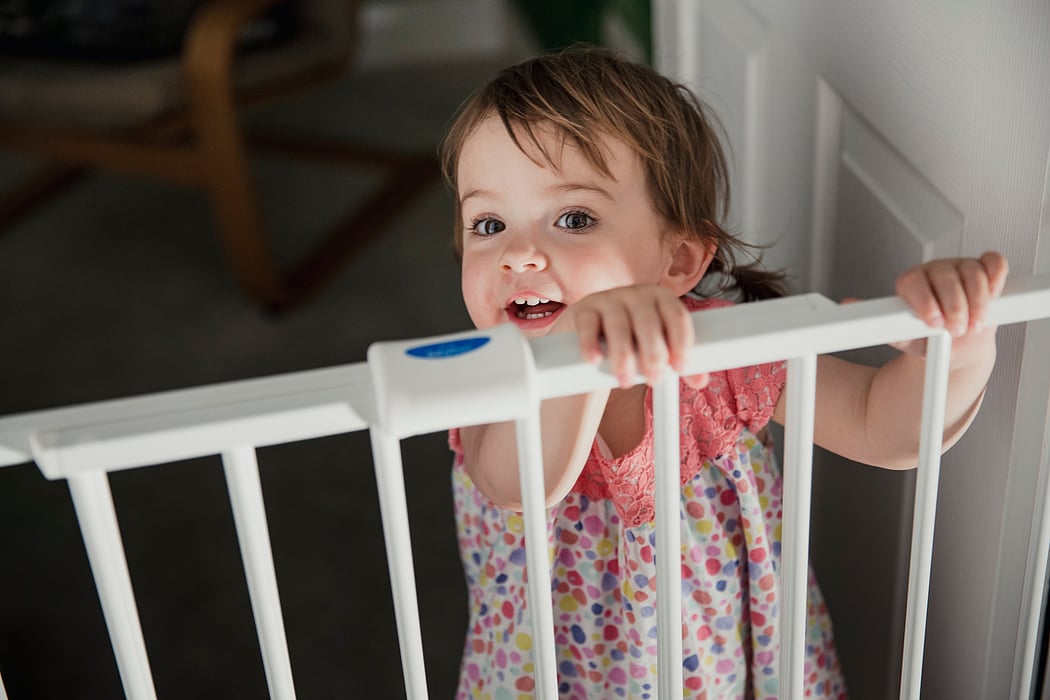‘Baby-Proofing’ Your House: A New Parent’s Guide

TUESDAY, April 11, 2023 (HealthDay News) -- There are too many heartbreaking stories of babies and young children suffering serious injury or even death due to an accident in the home. You hope it doesn’t happen to your family, and taking preventive measures is the first step in ensuring it doesn’t.
Baby-proofing the house is a rite of passage for new parents and caregivers. It helps keep your baby safe from hazards at home.
“Research shows that children are more likely to be injured at home than anywhere else,” pediatrician Dr. Kimberly Giuliano said in a recent Cleveland Clinic article. “Part of that may be because kids spend a lot of time at home compared to other places.”
Children also typically have less direct supervision at home.
“At school, the teachers are always watching. And the coach is there during your child’s game or practice,” Giuliano added. “At home, there’s more likely to be some alone time.”
On top of that, babies are accident-prone.
Naturally curious, they love to explore by touching and putting things in their mouths.
Experts from Yale Baby School -- a Yale University research and education initiative -- say “your baby’s mouth is their primary tool for exploring new objects.”
Also, babies trip and fall easily because they lack the coordination required to maneuver around furniture, appliances and stairs.
Finally, risk and danger aren’t concepts babies understand. They don’t consider the danger involved in risky behaviors such as getting too close to a flight of stairs.
In a recent report, safehome.org claimed close to “40% of parents said that their child’s injury could have been avoided had they taken proper childproofing precautions.”
Putting safety first is key to reducing the likelihood of injury to your baby or small child.
What to safeguard
- Baby-proof cabinets and drawers: Dangerous items like chemicals, breakable items and sharp objects are kept in cabinets and drawers in just about every room in the house. Household chemicals like pesticides and cleaning supplies can be lethal if ingested. The American Academy of Family Physicians (AAFP) recommends moving household chemicals out of cabinets to a spot in the house completely out of reach of babies and small children. If that’s not possible, it’s critical to baby-proof drawers and cabinets, to secure these items. Safety locks and latches are commonly used to baby-proof cabinets and drawers, especially lower cabinets and drawers in the kitchen, bathroom, bedroom and laundry room. There are many affordable and easy-to-install choices.
- Baby-proof door handles: Door knobs might not seem like a problem, but as soon as babies can climb, they will be able to reach door handles. At that point, anything behind that door is fair game for your curious young child. Baby-proof door handles for rooms that present danger and should remain off-limits, the AAFP says. These rooms include bathrooms and rooms with low window ledges that pose a fall hazard. Depending on the door handle style, you can buy door lever locks or door knob safety covers. Another option is a child safety door lock installed high on the door out of your child’s reach. Both are affordable items for keeping young children out of certain rooms in the house.
- Baby-proof fireplaces: A cozy fire grabs the attention of adults and children alike. Your fireplace is a high-risk zone for two reasons: The hearth is frequently made of brick or tile (both unforgiving surfaces) and the fire itself is dangerous. The most effective way to create a baby-proof a fireplace is to completely block access to it, including the hearth. A gate that encloses the fireplace and is attached to the wall on each side is a smart option. If you don’t want to keep a gate up during months when the fireplace isn’t used, covering the corners of the hearth with padding is the best option to protect your baby from falling from or onto the hard surface.
- Baby-proof stairs: Stairs pose a threat to babies because of their inability to understand the danger, as well as their lack of stability and coordination. Babies aren’t able to navigate stairs alone; therefore, stairs should be blocked with a gate at the top and bottom, according to Safe Kids Worldwide. There is an assortment of gate styles that are either temporary or semi-permanent. The temporary gates are taken up and down each time you access the stairs. The semi-permanent gates, which are screwed into a stud in the wall, are easier to open and close and don’t fall down.
Regardless of how you decide to baby-proof your home, you can buy most materials at your local home improvement store or online. It’s just a matter of finding something you like that's within your budget.
Related Posts
New Asthma Drug Helps Kids, But Price Tag Is High
THURSDAY, Dec. 9, 2021 (HealthDay News) -- Children with hard-to-control asthma...
Diets Haven’t Improved Much Worldwide, and U.S. Remains Near Bottom of List
MONDAY, Sept. 19, 2022 (HealthDay News) -- Despite everything people have...
2004 to 2017 Saw Increase in Appendiceal Cancer
MONDAY, March 28, 2022 (HealthDay News) -- Incidence of appendiceal cancer...
Gun Deaths to Kids Are Rising in Pandemic, U.S. Hospital Study Shows
MONDAY, Jan. 16, 2023 (HealthDay News) -- If a study conducted at one St. Louis...
